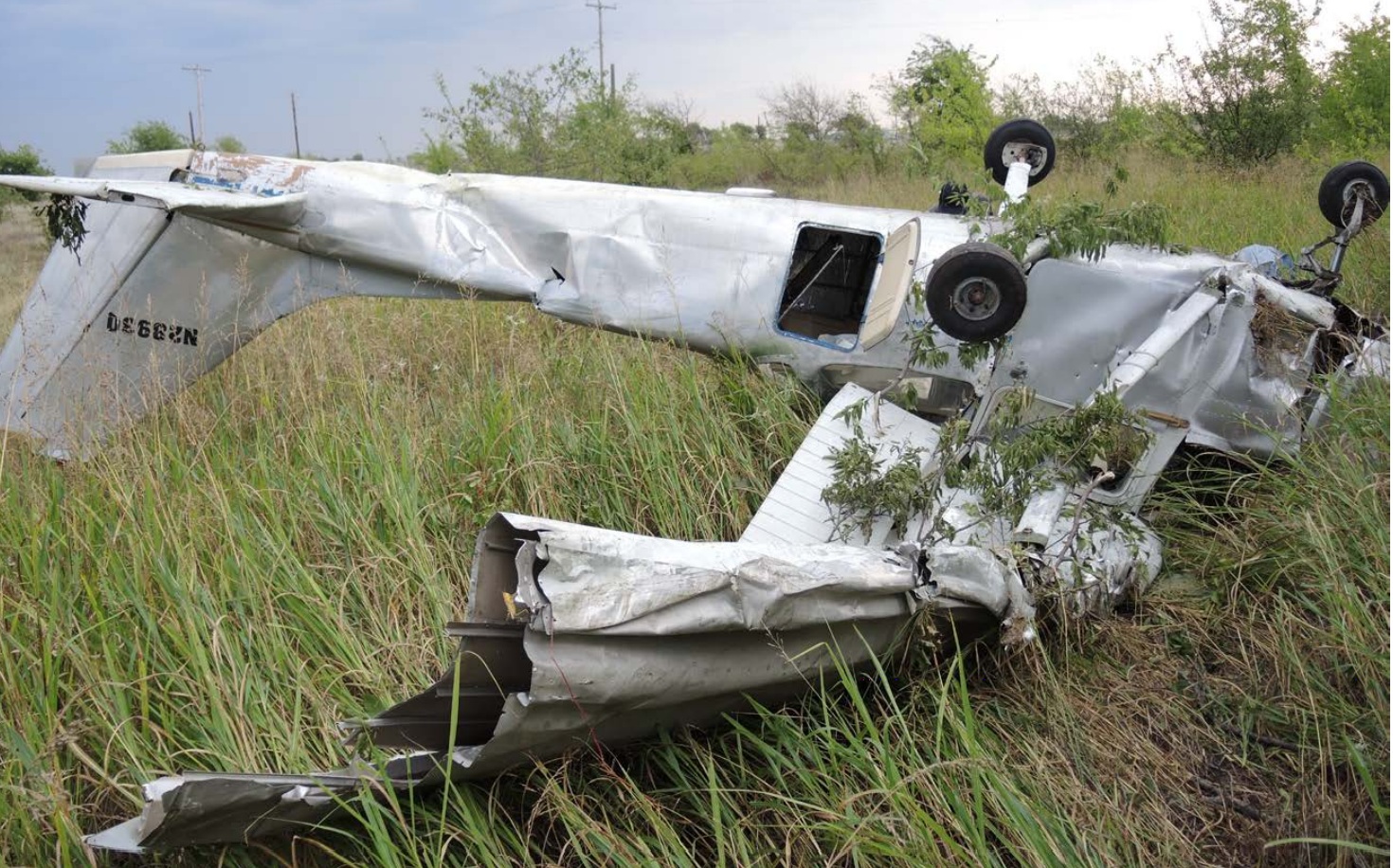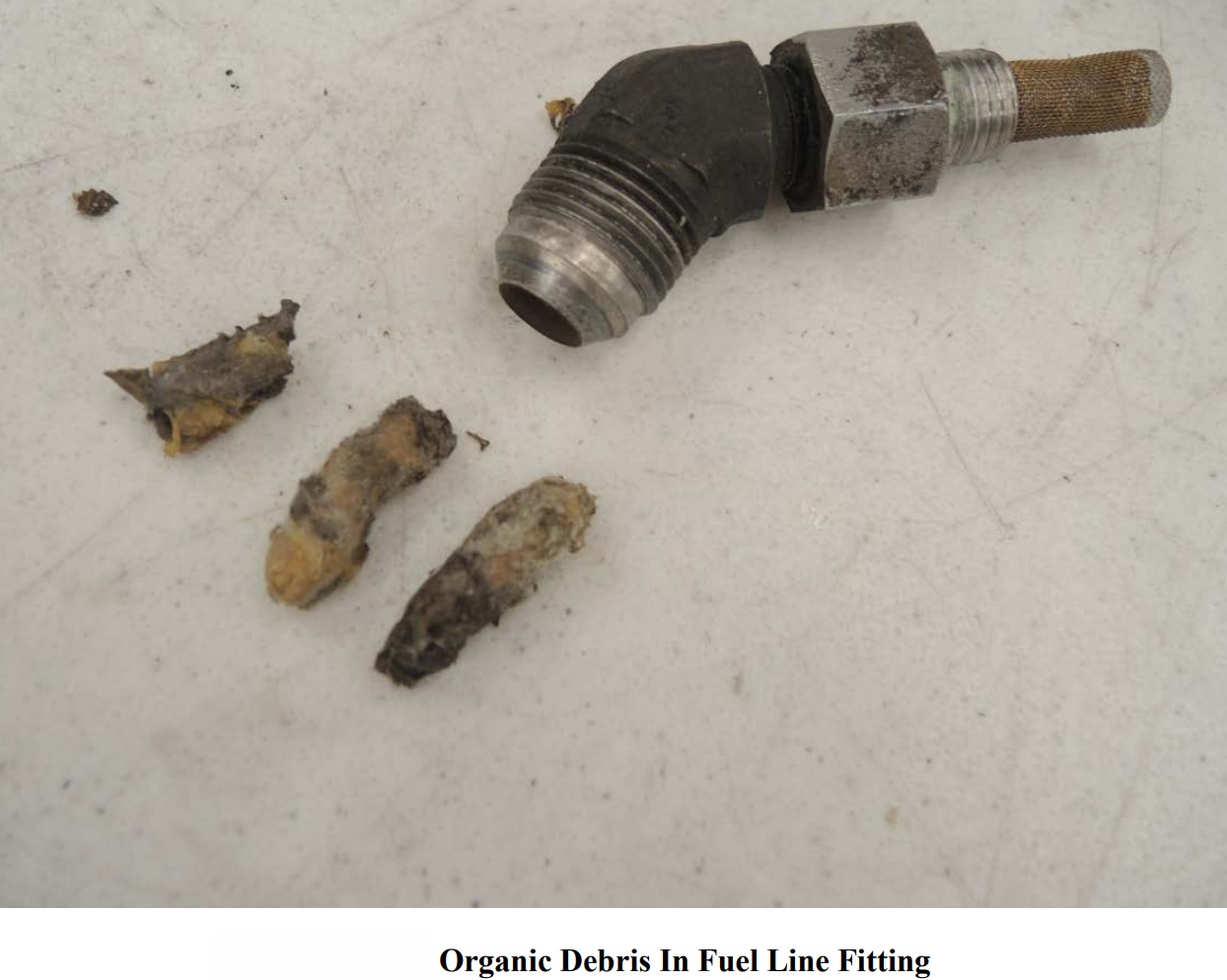
ASN Wikibase Occurrence # 214467
This information is added by users of ASN. Neither ASN nor the Flight Safety Foundation are responsible for the completeness or correctness of this information.
If you feel this information is incomplete or incorrect, you can submit corrected information.
| Date: | Thursday 16 August 2018 |
| Time: | 19:35 |
| Type: |  Cessna 172L Skyhawk |
| Owner/operator: | Private |
| Registration: | N2893Q |
| MSN: | 17259893 |
| Year of manufacture: | 1971 |
| Engine model: | Lycoming O-320-E2D |
| Fatalities: | Fatalities: 1 / Occupants: 4 |
| Aircraft damage: | Substantial |
| Category: | Accident |
| Location: | Rhome Meadows Airport, Wise County, TX -
 United States of America United States of America
|
| Phase: | Take off |
| Nature: | Private |
| Departure airport: | Rhome, TX (T76) |
| Rhome, TX (T76) | |
| Investigating agency: | NTSB |
| Confidence Rating: |
The commercial pilot was taking family members for rides in his airplane; the accident flight was the third flight of the evening. After the second flight, the pilot landed and taxied the airplane back to his property, where three family members boarded the airplane while the engine continued to run. The pilot taxied back to the runway and departed. A pilot-rated witness stated that the takeoff roll was longer than expected, and, once airborne, the airplane pitched "very high" nose-up to about 50 ft above ground level (agl), then the nose came back down. The airplane appeared to accelerate down the runway until it climbed to about 300 ft agl, then made a left turn and descended out of view. The airplane impacted several trees and continued into a field, where it came to rest inverted. Damage to the propeller was consistent with a lack of engine power at the time of impact.Examination of the airplane revealed evidence of a longstanding pattern of inadequate maintenance, including a rodent's nest in the leading edge of the left wing, a large mud dauber nest on the oil cooler, and cobwebs in the engine compartment. An automotive hydraulic hose was used in place of the main fuel line from the gascolator to the carburetor. The gascolator fuel strainer contained 3 large pieces of organic debris similar to insect cocoons, which were the same size as the hydraulic hose and associated fuel fitting. It is likely that the fuel line was removed for an extended period of time and eventually replaced with the automotive hydraulic hose, during which time the fuel system was exposed, which allowed insects to nest inside; because there were no maintenance records associated with the airplane, it could not be determined when the hose was replaced. During the accident flight, it is likely that the organic material became dislodged and restricted fuel to the carburetor, which subsequently starved the engine of available fuel and resulted in a total loss of engine power.
The autopsy of the pilot revealed evidence of hypertension and coronary artery disease; however, it is unlikely that these conditions contributed to the accident. Toxicological testing indicated that the pilot had been using alcohol before the accident and had levels considered impairing; it is likely that alcohol impaired the pilot's decision making and his ability to operate the airplane. Toxicological testing also revealed evidence that the pilot had used marijuana before the accident; however, it could not be determined if the concentrations would have been impairing or would have affected his performance.
Probable Cause: The pilot's inadequate maintenance of the airplane, which resulted in a total loss of engine power due to fuel starvation when organic debris restricted available fuel to the carburetor, and the pilot's impairment due to the ingestion of alcohol, which affected his ability to safely operate the airplane following the loss of engine power.
Accident investigation:
 |
|
Sources:
NTSB
FAA register: http://registry.faa.gov/aircraftinquiry/NNum_Results.aspx?NNumbertxt=2893Q
Location
Images:

Photo: NTSB

Photo: NTSB
Revision history:
| Date/time | Contributor | Updates |
|---|---|---|
| 17-Aug-2018 04:19 | Iceman 29 | Added |
| 17-Aug-2018 04:19 | Iceman 29 | Updated [Embed code] |
| 17-Aug-2018 04:22 | Iceman 29 | Updated [Location, Departure airport] |
| 17-Aug-2018 09:31 | Aerossurance | Updated [Operator, Location, Nature, Source, Narrative] |
| 17-Aug-2018 10:17 | Iceman 29 | Updated [Registration, Source, Embed code] |
| 17-Aug-2018 16:49 | Geno | Updated [Aircraft type, Registration, Cn, Source, Embed code] |
| 01-May-2019 19:55 | Captain Adam | Updated [Narrative] |
| 15-Sep-2019 10:18 | ASN Update Bot | Updated [Time, Country, Departure airport, Destination airport, Source, Embed code, Narrative, Accident report, ] |
| 15-Sep-2019 12:36 | harro | Updated [Country, Source, Embed code, Narrative, Photo] |
| 15-Sep-2019 12:39 | harro | Updated [Photo] |
Corrections or additions? ... Edit this accident description
The Aviation Safety Network is an exclusive service provided by:


 ©2024 Flight Safety Foundation
©2024 Flight Safety Foundation